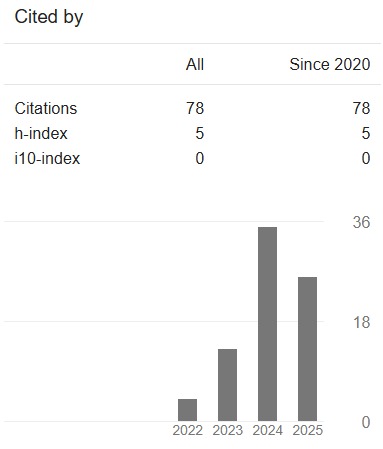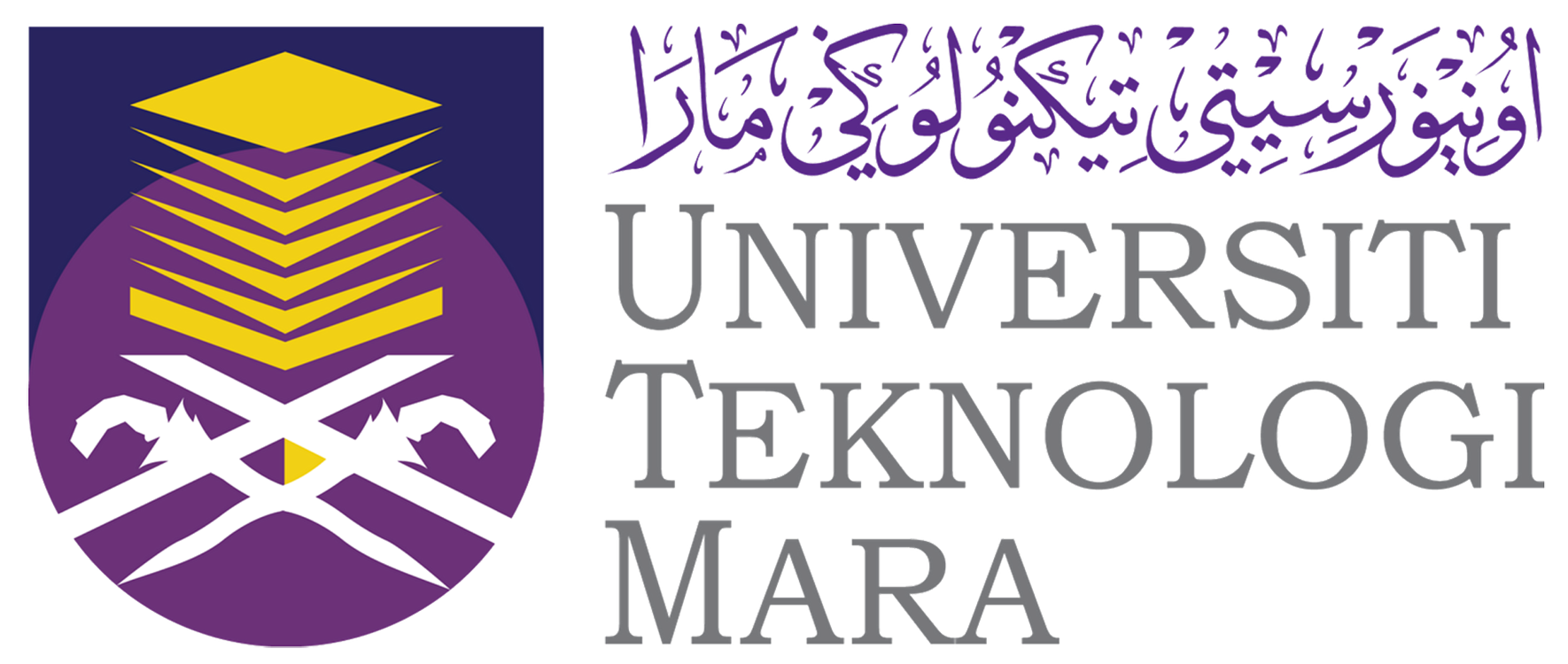Experimental and Simulation Study of Tensile Strength of Banana and Glass Fibres and their Hybrid Epoxy Composites
DOI:
https://doi.org/10.24191/jaeds.v5i2.134Keywords:
Composite, tensile properties, banana fibre, glass fibre, epoxyAbstract
In recent years, the growing emphasis on sustainability has driven researchers to explore eco-friendly materials that can provide sufficient mechanical strength while minimizing environmental impact. Composite materials have gained prominence for their ability to combine the advantageous properties of different constituents. In particular, hybrid composites composed of multiple fibre types offer potential for use in demanding industries such as aerospace and automotive manufacturing. Although fibreglass and epoxy are widely recognized for their excellent mechanical performance, the integration of natural fibres such as banana fibre in hybrid composites remains limited. Previous studies have also revealed a notable lack of simulation-based research focusing on banana fibre reinforcement, whether as a standalone material or in combination with fibreglass. Therefore, this gap highlights the need to further investigate and validate the mechanical performance of banana-glass fibre composites through both experimental and simulation approaches. This study aims to determine the optimal tensile properties of glass fibre and banana fibre composites with various layer configurations and validate the simulation results against experimental findings to ensure the accuracy and reliability of the modelling approach. The composites were fabricated using the hand lay-up method and evaluated through tensile testing and simulation. The findings showed that the L1 configuration, composed entirely of glass fibre, exhibited the highest tensile strength, recording an ultimate load of 5.96 kN and an ultimate stress of 119.46 MPa experimentally, while simulation results yielded 5.83 kN and 119.06 MPa. In contrast, the L2 configuration, made solely of banana fibre, showed the lowest tensile performance, with an ultimate load of 1.13 kN and ultimate stress of 10.17 MPa experimentally, compared to 1.11 kN and 9.84 MPa in simulation. Among the hybrid laminates, L4 (5 glass fibre layers and 4 banana fibre layers) outperformed L3 (4 glass fibre layers and 5 banana fibre layers), attributed to its layer arrangement that enhanced structural integrity. The percentage error between experimental and simulated results was below 4%, confirming strong correlation and model accuracy. Both research objectives were successfully achieved. The results demonstrated that glass fibre significantly enhances the tensile strength of hybrid composites, while banana fibre contributes to environmental sustainability with moderate strength retention. Overall, the study validates the feasibility of using banana–glass fibre hybrid composites and supports their potential application in lightweight, sustainable engineering materials. The first objective, which aimed to determine the optimal tensile properties of glass fibre and banana fibre in various configurations by adjusting their layer arrangements, was successfully achieved. The second objective, focused on validating the tensile properties obtained from simulation results against experimental findings, was also successfully fulfilled where the percentage error was below percentage error of 4%. The results indicate that the laminate composed entirely of glass fibre layers (L1) exhibited the highest tensile properties, whereas the laminate consisting solely of banana fibre layers (L2) demonstrated the lowest tensile strength. In the case of hybrid composites, glass fibre contributed a significantly greater effect on the overall strength compared to banana fibre alone. Among the hybrid laminates, L4 achieved higher ultimate load and ultimate stress than L3, which could be attributed to its lay-up configuration where two glass fibre layers were positioned between two banana fibre layers, thereby enhancing the structural integrity of the composite.
Downloads
References
M. Ismail, M. R. M. Rejab, J. P. Siregar, Z. Mohamad, M. Quanjin, and A. A. Mohammed, “Mechanical properties of hybrid glass fiber/rice husk reinforced polymer composite,” Mater Today Proc, vol. 27, no. April, pp. 1749–1755, 2020, doi: 10.1016/j.matpr.2020.03.660.
H. Pranoto and M. Fitri, “The Effect of Alkali Treatment to Mechanical Properties of Resin Composite Reinforced with Coir Coconut Fiber,” 2022.
B. Sampath, N. Naveenkumar, P. Sampathkumar, P. Silambarasan, A. Venkadesh, and M. Sakthivel, “Experimental comparative study of banana fiber composite with glass fiber composite material using Taguchi method,” in Materials Today: Proceedings, Elsevier Ltd, 2021, pp. 1475–1480. doi: 10.1016/j.matpr.2021.07.232.
M. Yahiya and N. Venu Kumar, “A review on natural fiber composite with banana as reinforcement,” Mater Today Proc, 2023, doi: 10.1016/j.matpr.2023.03.211.
Y. V. Ravi, N. Kapilan, S. Rajole, Y. S. Balaji, N. Varun Kumar Reddy, and B. K. Venkatesha, “Damage resistance evaluation of E-glass and hybrid hemp-banana natural fiber composite helmet using drop weight impact test,” Mater Today Proc, vol. 54, pp. 330–335, Jan. 2022, doi: 10.1016/j.matpr.2021.09.213.
R. Prem Chand, B. S. Halemani, K. M. Chandrasekhar, Y. P. Ravitej, T. Hemanth Raju, and S. Udayshankar, “Investigation and analysis for mechanical properties of banana and e glass fiber reinforced hybrid epoxy composites,” in Materials Today: Proceedings, Elsevier Ltd, 2021, pp. 2509–2515. doi: 10.1016/j.matpr.2021.05.044.
L. Prabhu et al., “Experimental investigation on mechanical properties of flax/banana/ industrial waste tea leaf fiber reinforced hybrid polymer composites,” in Materials Today: Proceedings, Elsevier Ltd, 2021, pp. 8136–8143. doi: 10.1016/j.matpr.2021.02.111.
M. V. K. Reddy, R. V. S. Lakshmi, Y. Pragathi, P. Devaraj, and N. Naresh, “Evaluation of mechanical properties: Influence of glass fiber on banana fiber reinforced with epoxy composite,” in Materials Today: Proceedings, Elsevier Ltd, 2020, pp. 1305–1312. doi: 10.1016/j.matpr.2020.06.467.
R. Karthick, K. Adithya, C. Hariharaprasath, and V. Abhishek, “Evaluation of mechanical behavior of banana fibre reinforced hybrid epoxy composites,” 2018. [Online]. Available: www.sciencedirect.comwww.materialstoday.com/proceedings2214-7853
R. Pai, L. Bangarappa, K. S. Lokesh, D. Shrinivasa Mayya, C. R. Naveen, and T. Pinto, “Hybridization effect on water absorption and flexural properties of E-glass/banana fibre/epoxy composites,” in Materials Today: Proceedings, Elsevier Ltd, 2022, pp. 1841–1845. doi: 10.1016/j.matpr.2021.11.491.
S. Thangaraj, A. Ranjith kumar, M. Vigneshwaran, M. Muthuraj, R. Shenbagaraj, and R. Girimurugan, “Distinctive study on banana/sisal fiber hybrid composites filled with nano marble dust particles,” Mater Today Proc, 2023, doi: 10.1016/j.matpr.2023.01.402.
S. Deepan, R. Jeyakumar, V. Mohankumar, and A. Manojkumar, “Influence of rice husk fillers on mechanical properties of banana/epoxy natural fiber hybrid composites,” in Materials Today: Proceedings, Elsevier Ltd, Jan. 2023, pp. 575–580. doi: 10.1016/j.matpr.2022.09.459.
Md. M. H. Kanok, S. S. Shifa, M. S. Haque, and A. Akter, “Comparative study on mechanical properties of banana-glass fiber reinforced epoxy hybrid composites,” Mater Today Proc, Sep. 2023, doi: 10.1016/j.matpr.2023.08.356.
V. Santhanam, R. Dhanaraj, M. Chandrasekaran, N. Venkateshwaran, and S. Baskar, “Experimental investigation on the mechanical properties of woven hybrid fiber reinforced epoxy composite,” in Materials Today: Proceedings, Elsevier Ltd, 2020, pp. 1850–1853. doi: 10.1016/j.matpr.2020.07.444.
T. Batu and H. G. Lemu, “Investigation of mechanical properties of false banana/glass fiber reinforced hybrid composite materials,” Results in Materials, vol. 8, Dec. 2020, doi: 10.1016/j.rinma.2020.100152.
T. A. Negawo, Y. Polat, Y. Akgul, A. Kilic, and M. Jawaid, “Mechanical and dynamic mechanical thermal properties of ensete fiber/woven glass fiber fabric hybrid composites,” Compos Struct, vol. 259, Mar. 2021, doi: 10.1016/j.compstruct.2020.113221.
S. Omprakasam, P. Vishnu, B. M. Ishanna, S. Abinaya Sree, and R. Divya Rani, “Banana fiber with madar fiber composites for sustainable printed circuit boards,” Mater Lett, vol. 380, Feb. 2025, doi: 10.1016/j.matlet.2024.137750.
S. S. R. Koloor, A. Karimzadeh, N. Yidris, M. Petrů, M. R. Ayatollahi, and M. N. Tamin, “An energy-based concept for yielding of multidirectional FRP composite structures using a mesoscale lamina damage model,” Polymers (Basel), vol. 12, no. 1, 2020, doi: 10.3390/polym12010157.
A. Al Rashid, M. Y. Khalid, R. Imran, U. Ali, and M. Koc, “Utilization of banana fiber-reinforced hybrid composites in the sports industry,” Materials, vol. 13, no. 14, 2020, doi: 10.3390/ma13143167.
S. K. Kotla Rachana, “DEVELOPMENT AND TESTING OF GLASS FIBRE REINFORCED COMPOSITES,” 2020. [Online]. Available: http://www.ijeast.com
K. Jubair, M. S. Islam, and D. Chakraborty, “Investigation of Mechanical Properties of Banana-Glass Fiber Reinforced Hybrid Composites,” Journal of Engineering Advancements, pp. 175–179, Nov. 2021, doi: 10.38032/jea.2021.04.002.
T. Seshaiah, K. Vijaya, and K. Reddy, “EFFECT OF FIBER ORIENTATION ON THE MECHANICAL BEHAVIOR OF E-GLASS FIBRE REINFORCED EPOXY COMPOSITE MATERIALS.” [Online]. Available: www.tjprc.org
M. R. Sanjay, G. R. Arpitha, L. Laxmana Naik, K. Gopalakrishna, and B. Yogesha, “Studies on mechanical properties of Banana/E-Glass fabrics reinforced polyester hybrid composites,” Journal of Materials and Environmental Science, vol. 7, no. 9, pp. 3179–3192, 2016.
S. Shankar, H. K. Shivanand, and E. P. Koorapati, “Comparative Study of Experimental and Simulated Results of Compression Test on Epoxy Based E-Glass / Carbon Fiber Reinforced Polymer Composite Laminates,” International Journal of Emerging Technology and Advanced Engineering, vol. 4, no. 8, pp. 288–296, 2014.
M. D. Monzón et al., “Experimental analysis and simulation of novel technical textile reinforced composite of banana fibre,” Materials, vol. 12, no. 7, pp. 1–23, 2019, doi: 10.3390/ma12071134.
Abaqus, “ABAQUS VERSION 6.6 DOCUMENTATION,” Abaqus. [Online]. Available: https://classes.engineering.wustl.edu/2009/spring/mase5513/abaqus/docs/v6.6/books/exa/default.htm?startat=ch01s04aex50.html
M. D. Monzón et al., “Experimental analysis and simulation of novel technical textile reinforced composite of banana fibre,” Materials, vol. 12, no. 7, pp. 1–23, 2019, doi: 10.3390/ma12071134.
M. El Messiry, “Theoretical analysis of natural fiber volume fraction of reinforced composites,” Alexandria Engineering Journal, vol. 52, no. 3, pp. 301–306, 2013, doi: 10.1016/j.aej.2013.01.006.
“An_Investigation_into_the_Effects_of_Fibre_Volume_Fraction_on_GFRP_Plate_1.pdf”.
L. Ciprian, P. Radu, and E. Ioana, “The Effects of Fibre Volume Fraction on a Glass-Epoxy Composite Material,” INCAS BULLETIN, vol. 7, no. 3, pp. 113–119, Sep. 2015, doi: 10.13111/2066-8201.2015.7.3.10.
J. William D. Callister, Material Science And Engineering An Introduction, Sixth Edit. United States of America, 2003.
H. Xin, Y. Liu, A. S. Mosallam, J. He, and A. Du, “Evaluation on material behaviors of pultruded glass fiber reinforced polymer (GFRP) laminates,” Compos Struct, vol. 182, pp. 283–300, 2017, doi: 10.1016/j.compstruct.2017.09.006.
R. Prem Chand et al., “Characterization of banana and e glass fiber reinforced hybrid epoxy composites,” in Materials Today: Proceedings, Elsevier Ltd, 2021, pp. 9119–9125. doi: 10.1016/j.matpr.2021.05.402.
M. D. Stanciu, H. T. Drăghicescu, and I. C. Roșca, “Mechanical properties of GFRPs exposed to tensile, compression and tensile—tensile cyclic tests,” Polymers (Basel), vol. 13, no. 6, Mar. 2021, doi: 10.3390/polym13060898.
R. Prem Chand et al., “Characterization of banana and e glass fiber reinforced hybrid epoxy composites,” in Materials Today: Proceedings, Elsevier Ltd, 2021, pp. 9119–9125. doi: 10.1016/j.matpr.2021.05.402.
A. Al Rashid, M. Y. Khalid, R. Imran, U. Ali, and M. Koc, “Utilization of banana fiber-reinforced hybrid composites in the sports industry,” Materials, vol. 13, no. 14, Jul. 2020, doi: 10.3390/ma13143167.
M. K. Moon, S. Saha, A. Biswas, and A. A. Paul, “Characteristics and Comparative Study of Sodium Hydroxide Treated Banana Fiber Reinforced Composite Material,” IOP Conf Ser Mater Sci Eng, vol. 1305, no. 1, p. 012029, Apr. 2024, doi: 10.1088/1757-899x/1305/1/012029.
L. Karthick, S. Sivakumar, A. Sasikumar, A. Prabhu, J. Senthil Kumar, and L. Vadivukarasi, “A comparison and analysis of mechanical properties of glass fiber and banana fiber composite,” in Materials Today: Proceedings, Elsevier Ltd, 2022, pp. 398–402. doi: 10.1016/j.matpr.2021.09.073.
Downloads
Published
How to Cite
Issue
Section
License
Copyright (c) 2025 Mustafa Nordin, Mohd Rozaiman Aziz, Rozaini Othman

This work is licensed under a Creative Commons Attribution 4.0 International License.








